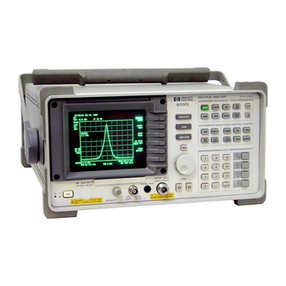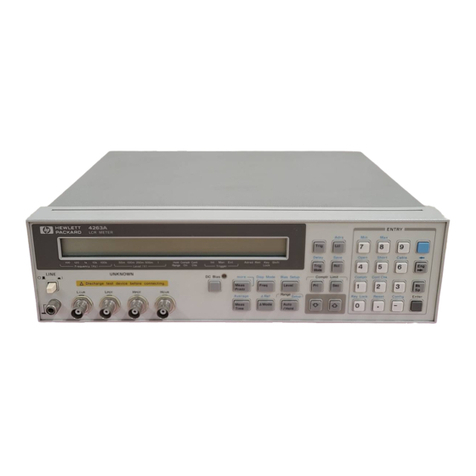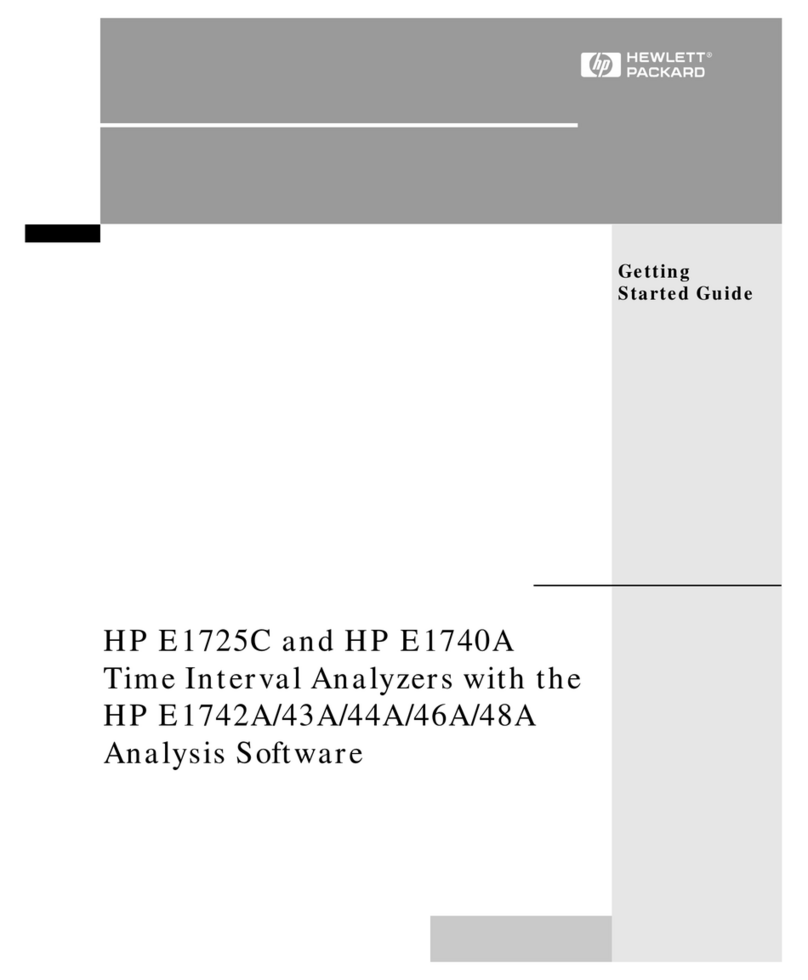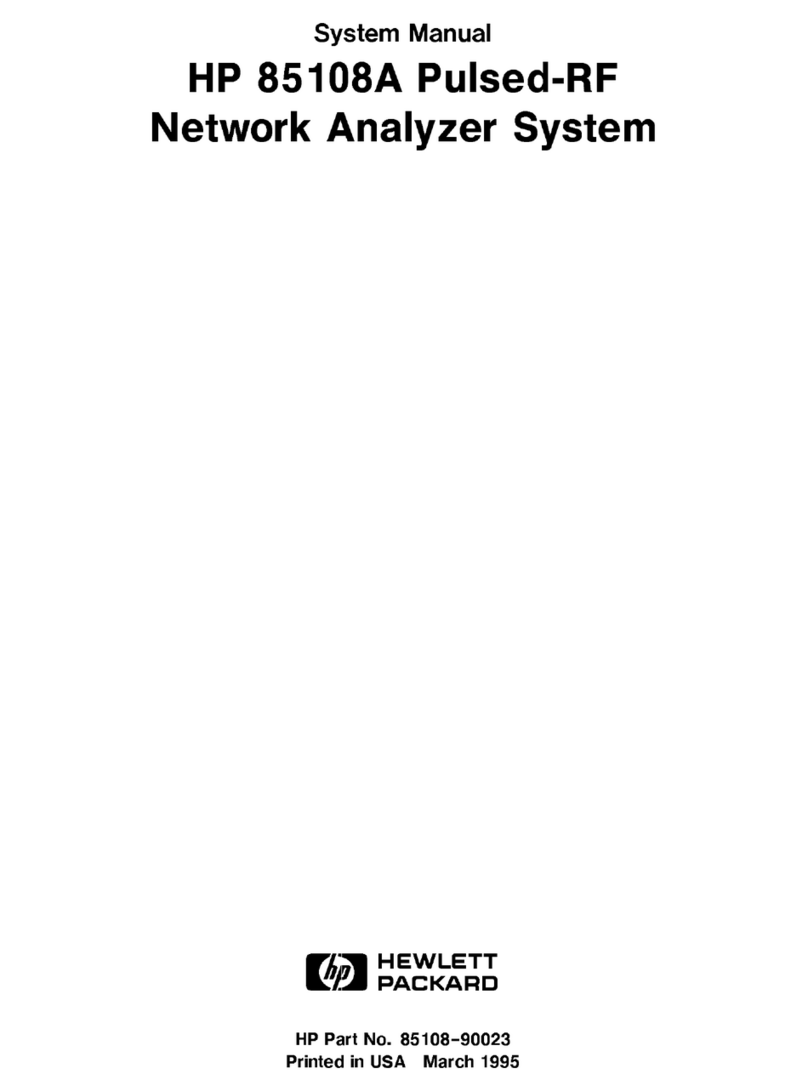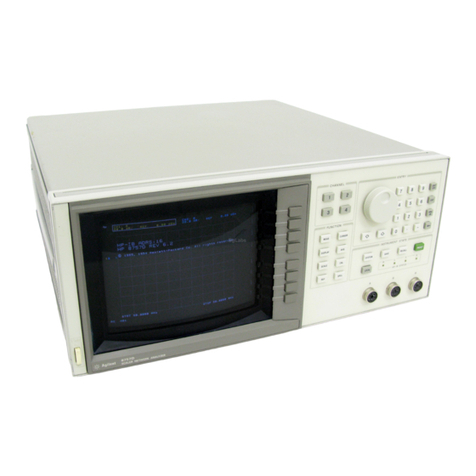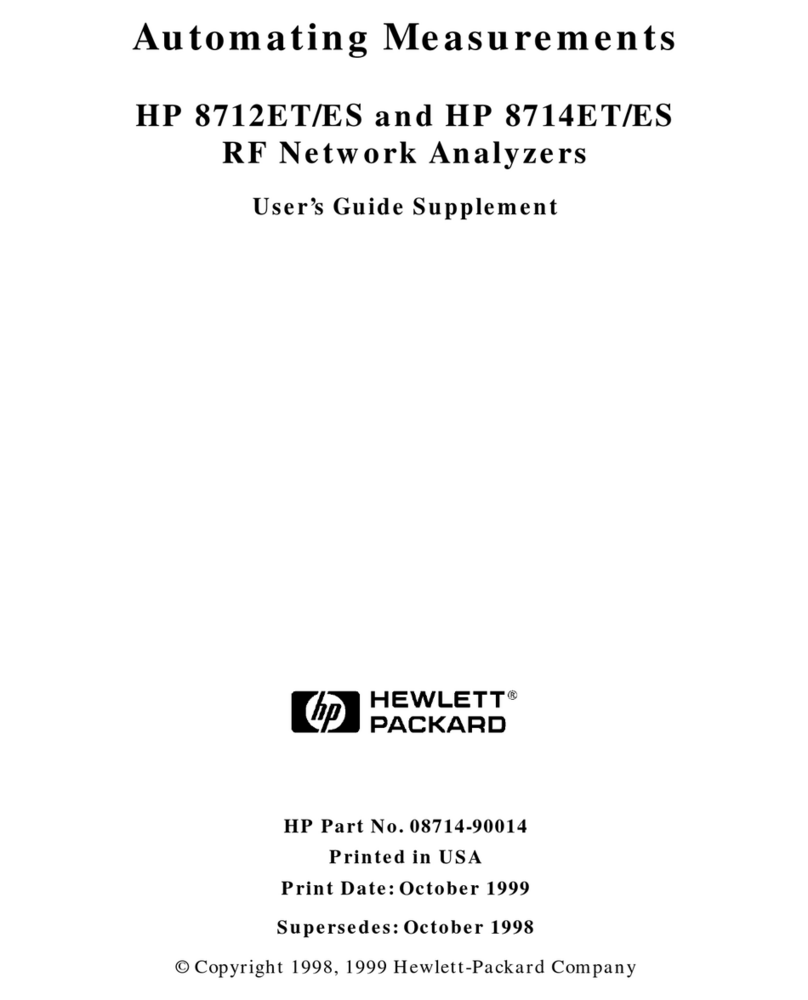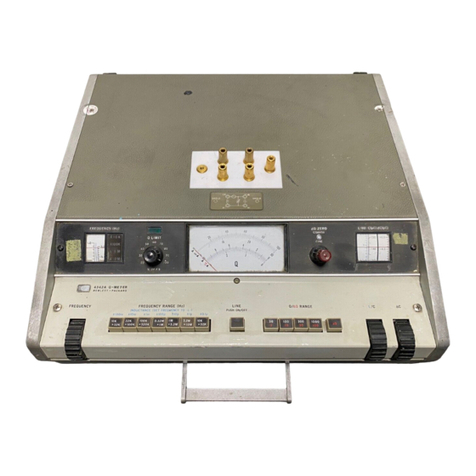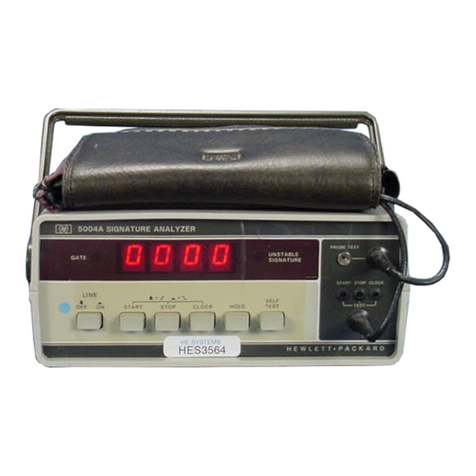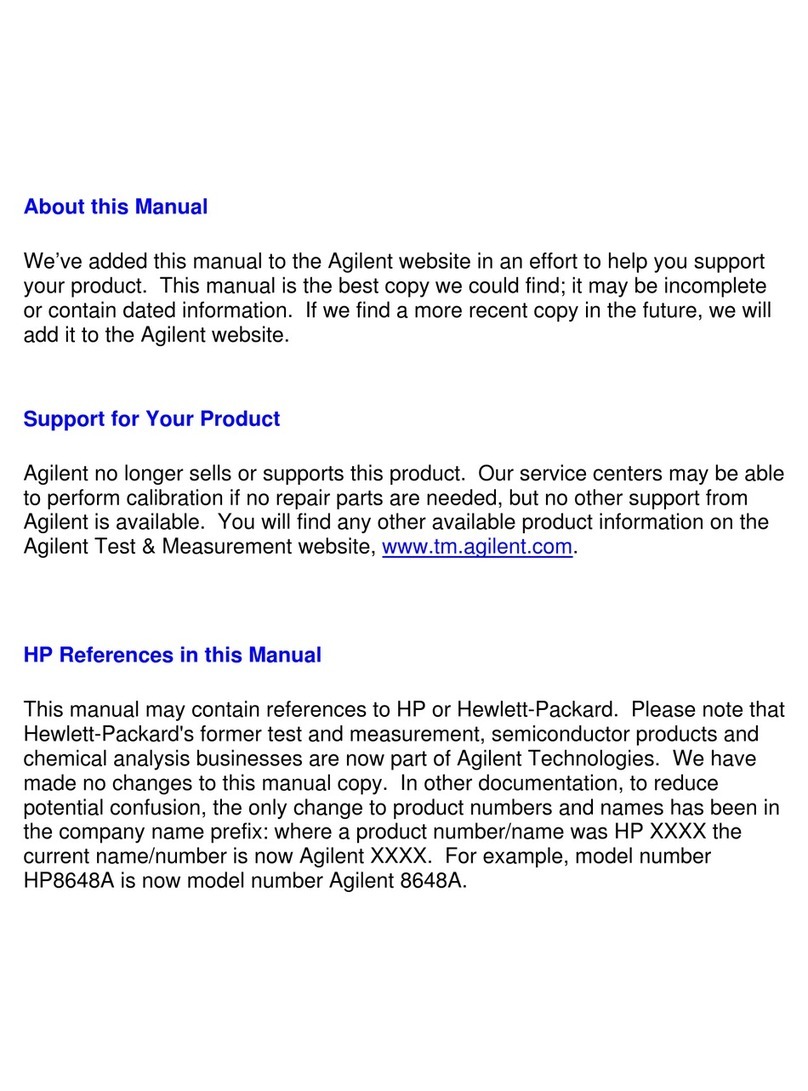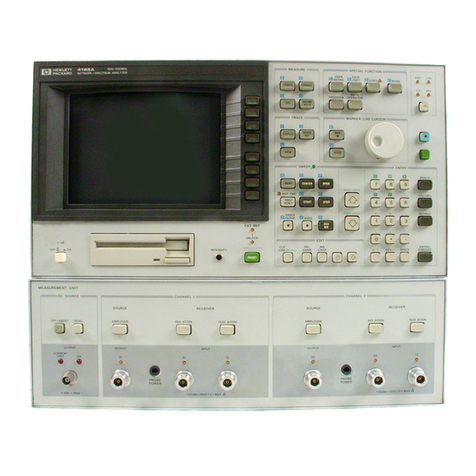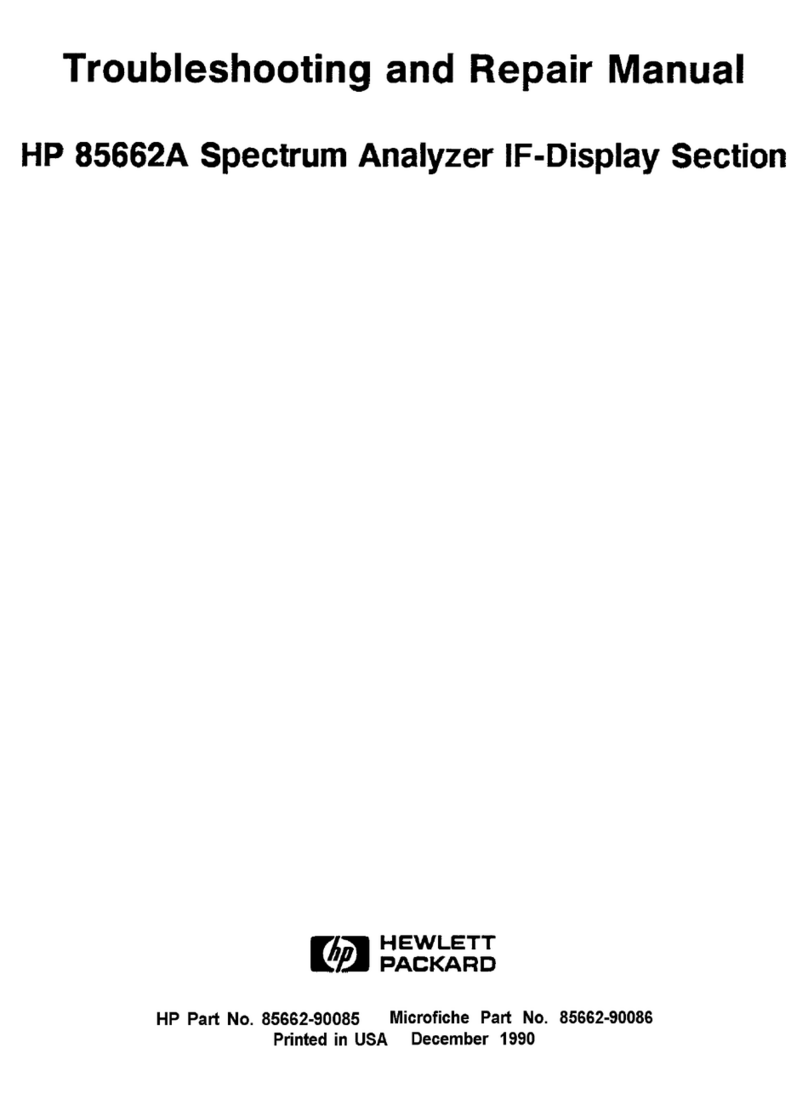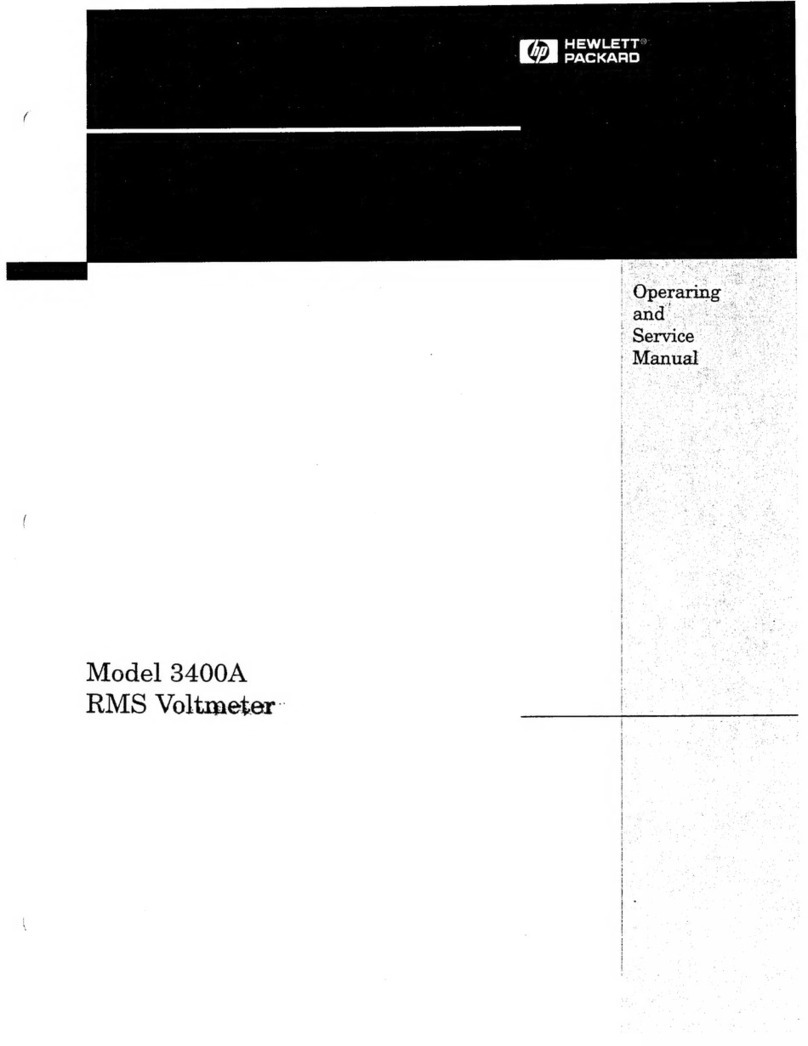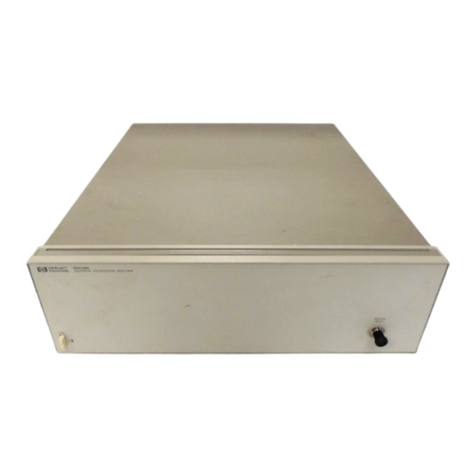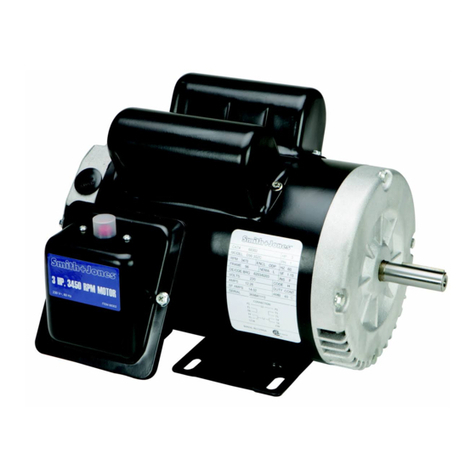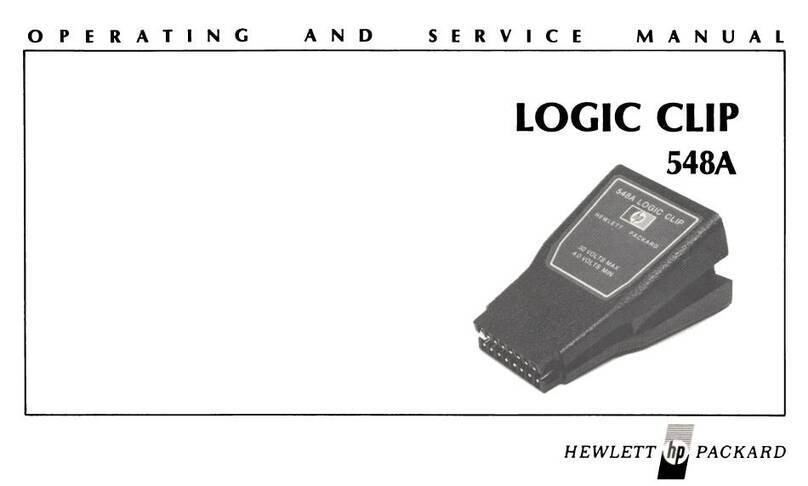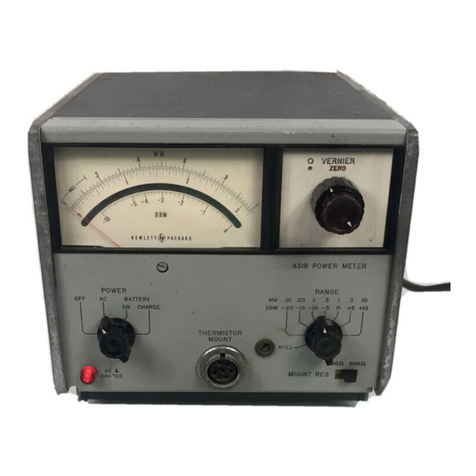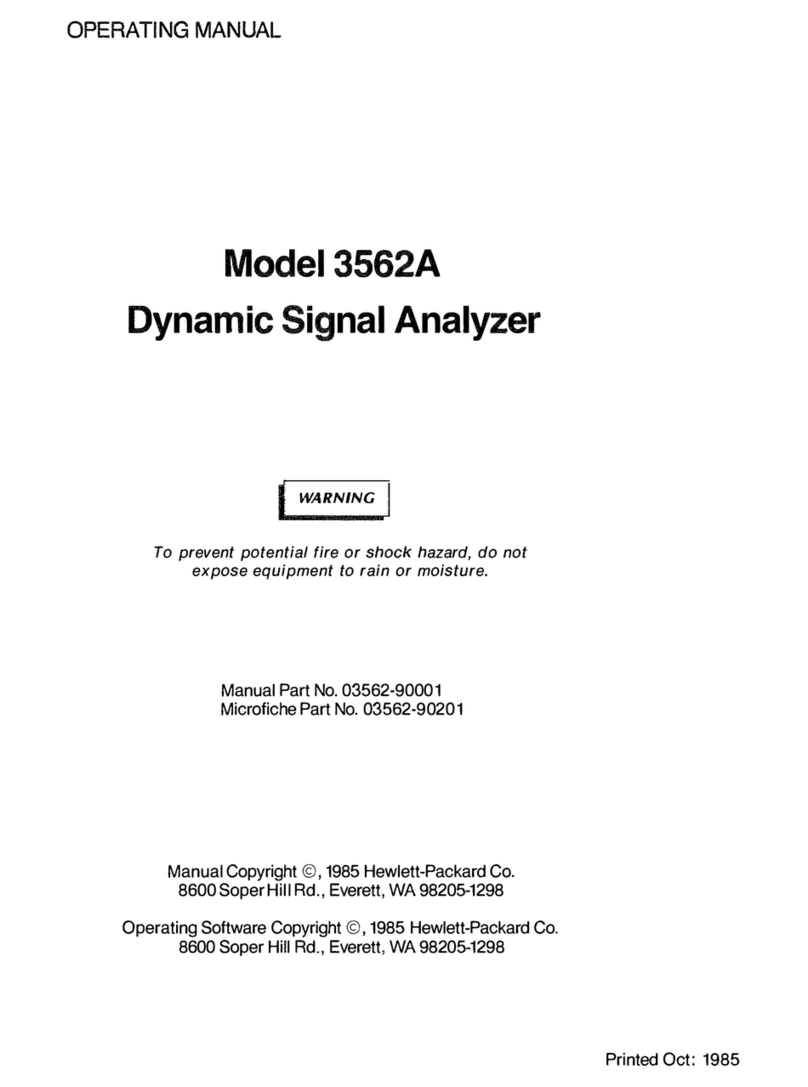
SCOPE
OF
MANUAL
This manual contains information about the Hewlett-Packard
547A
Current Tracer. Coverage includes a description
of the instrument, its applications, specifications, instructions in
its
use, theory
of
operation, maintenance, perform-
ance tests, adjustments, list
of
replaceable parts and how
to
obtain them, component locators, and schematics.
DESCRIPTION
The
HP
547A
Current Tracer
is
a hand-held probe which enables the precise localization
of
low-impedance faults
in electrical systems. The probe
senses
the magnetic field generated by a pulsing current internal to the circuit
or
by current pulses supplied by
an
external stimulus
such
as
the
HP
546A
or
10526T
Logic Pulsers. Indication
of
the
presence
of
current pulses
is
provided by lighting the indicator lamp near the Current Tracer tip. Adjustment of
probe sensitivity over the 1 mA
to
1A range
is
provided by the
SENSITIVITY
control near the indicator. The probe
is
self-contained and requires <75 mA at 4.5V
to
18V, from any convenient source.
INSTRUMENT
IDENTIFICATION
Hewlett-Packard
uses
a
6-digit
serial number
(AOOOOO)
to
identify the Current Tracer.
If
the serial number of
your instrument differs from
the
serial number(s) on the title page
of
this manual, there are other differences
between the manual and your instrument.
These
differences are covered in a
"MANUAL
CHANGES" sheet
which
is
included with the manual.
